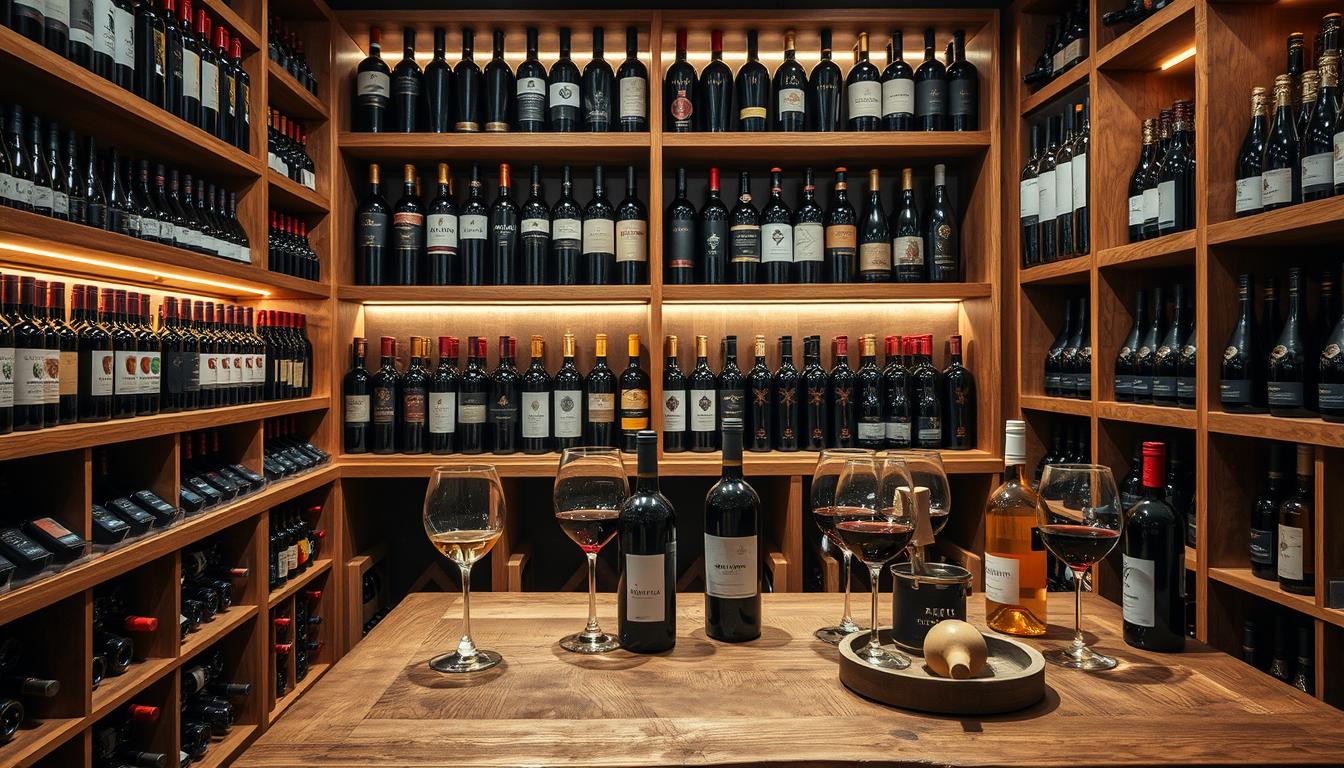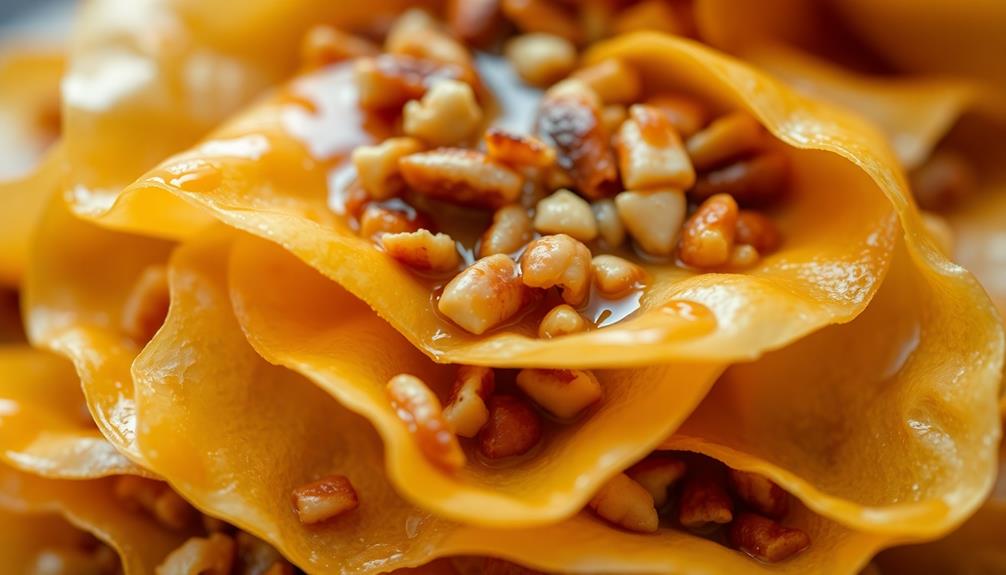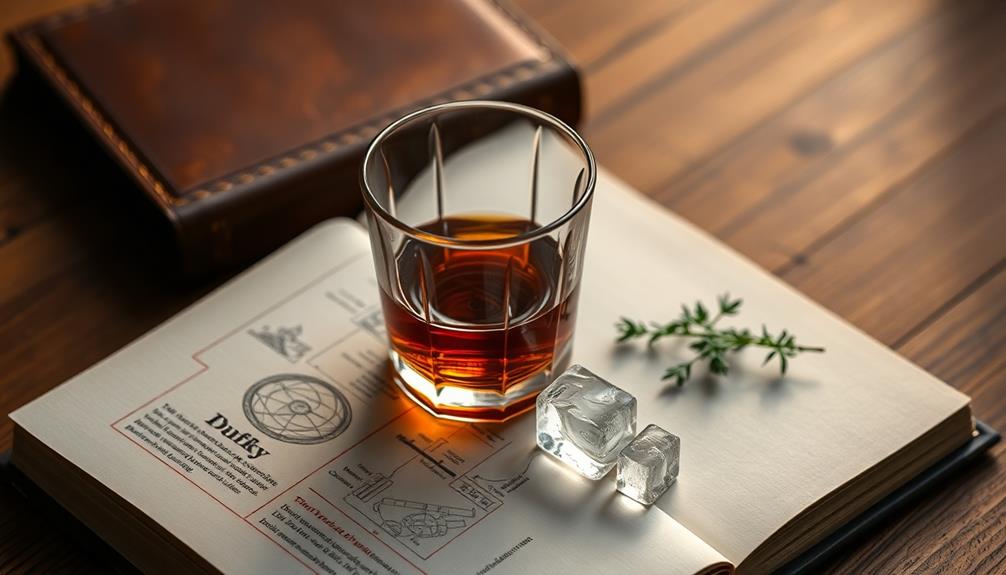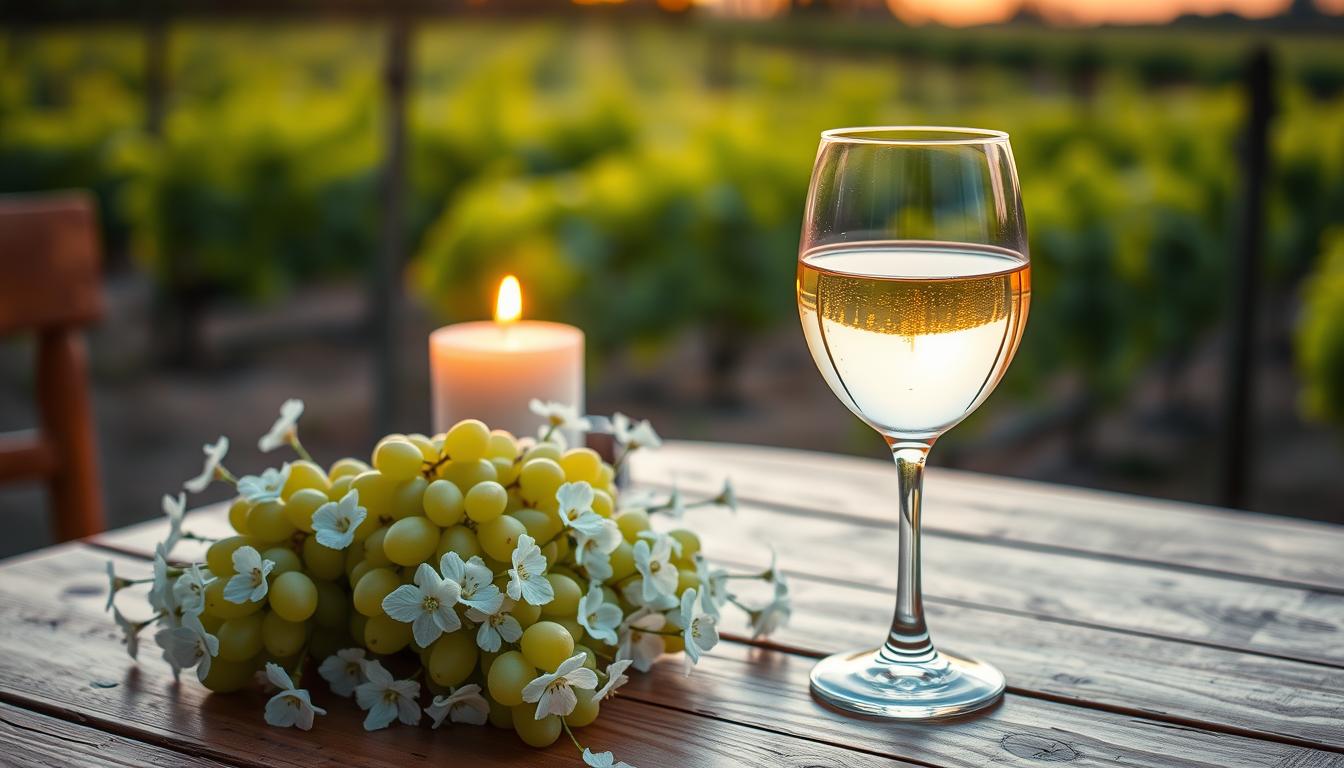Imagine standing in front of your wine cellar, the aroma of rich Bordeaux and crisp Riesling filling the air. Each bottle represents a moment, a memory, or perhaps a dream waiting to be uncorked. If you’re anything like a 23-year-old collector who has carefully stashed away five and a half cases in a bonded warehouse, you’re well aware of the complexities involved in building your wine collection. You may find yourself questioning how diverse to make your collection or whether to invest in a few single bottles of mature wine before committing to an entire case. Elements like regional expertise, grape varietals, and evolving preferences play a significant role in this intricate journey. The task can feel daunting, especially when navigating the nuances of wine scores and producer reputations.
As you embark on this thrilling adventure, it’s important to embrace a methodical approach. Whether you’re pondering how many Burgundy producers to explore or deciding the best way to develop a loyal relationship with wine merchants, you’re not alone in your contemplation. With each decision, you are inching closer to not just collecting wines but creating a memorable experience shaped by your own unique tastes.
This guide is tailored for you. Filled with expert wine tips and insights, it will help you craft your wine collection with care and intention. Let’s delve deeper into the world of wine collecting and uncover how to align your personal preferences with your aspirations, making the process rewarding every step of the way. Consider starting with a few staple bottles that speak to your taste and budget. As you expand your collection, don’t forget about the importance of proper storage and wine openers to ensure that you can enjoy your selections at their best. With the right tools and knowledge, you can enhance your wine collecting experience and savor the journey of discovering new and exciting vintages.
Key Takeaways
- Consider building a diverse wine collection that reflects your evolving palate.
- Evaluate whether to purchase individual bottles of mature wine before committing to a case.
- Understand the importance of establishing relationships with multiple wine merchants.
- Be cautious about over-relying on wine scores, especially from unfamiliar producers.
- Explore various grape varietals and regions to expand your tasting experiences.
- Remember that each wine you add enriches the story of your collection.
Understanding the Basics of Wine Collecting
As you embark on your journey of building wine collections, understanding the fundamentals is crucial. A well-rounded collection not only enhances your enjoyment of wine but can also serve as a wise investment. Exploring your palate sets the tone for your selections, guiding you toward styles and varietals that resonate with your taste. This awareness allows you to appreciate the nuances in wines from various regions.
Importance of Exploring Your Palate
Exploring your palate is a vital step in the wine collecting process. It allows you to discover the styles you enjoy, whether you find yourself leaning towards a delicate red Burgundy or a robust Napa Valley Cabernet. This journey can include tasting a variety of wines to determine what satisfies your preferences. Understanding your palate will lead to more informed choices as you enhance your wine collection.
Key Wine Regions to Consider
Wine collections are often enriched by incorporating selections from key wine regions. Classics like Bordeaux and Burgundy are renowned for their exceptional quality. Yet, other regions also offer remarkable wines, often at better values. For instance, California and Italy produce outstanding choices that can diversify your collection without breaking the bank. As you research these areas, keep an open mind to explore lesser-known regions that may surprise you with their rich offerings.
Identifying Your Wine Preferences
Identifying your wine preferences plays a crucial role in shaping your collection. You might favor bright, refreshing whites for warm summer nights or rich, full-bodied reds for cozy winter gatherings. Keeping track of different wines you enjoy can help you refine your purchasing strategy and avoid unnecessary duplicates in your collection. This thoughtful approach ensures a dynamic and varied selection that consistently aligns with your tastes.
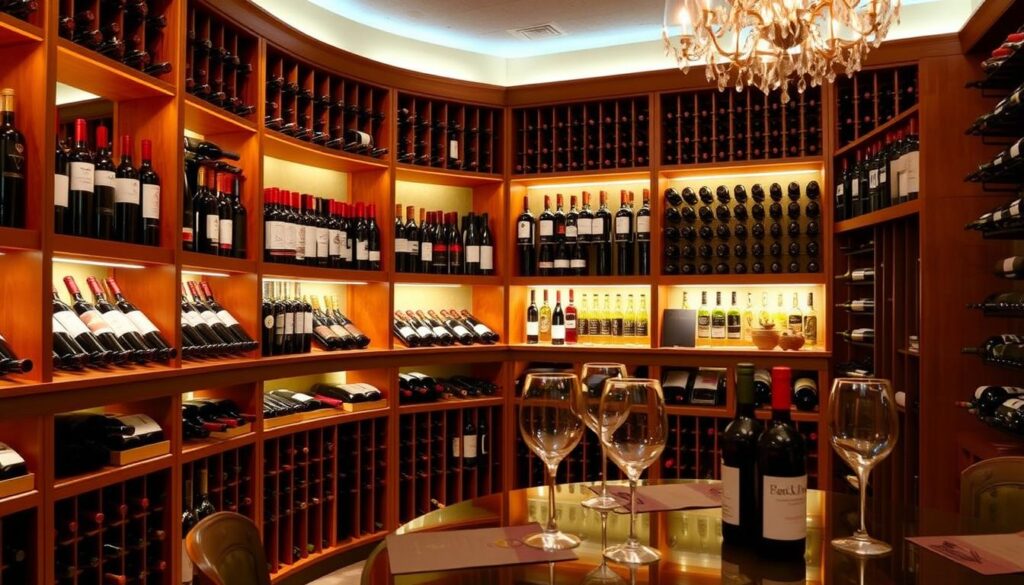
Setting Goals for Your Wine Collection
Establishing clear collection goals lays the foundation for creating a successful wine collection. Understanding whether to pursue a short-term or a long-term collection significantly influences your purchasing strategy and overall experience.
Deciding on Long-term vs. Short-term Collections
You have a couple of options when it comes to your wine collections: a short-term collection focused on immediate enjoyment or a long-term cellar aimed at aging quality wines. For short-term goals, consider wines with a shelf life of about five years. Cult winemakers produce reputable bottles, such as a limited 100-case old vine Syrah from Oregon, which can rapidly appreciate in value due to scarcity. This particular wine has gone from $45 to $150 a bottle, illustrating the market dynamics of wine collecting.
On the other hand, long-term collectors may want to invest in bottles with aging potential, particularly those from highly rated regions like Bordeaux. These wines, particularly from esteemed Châteaux, can appreciate significantly over a decade, providing both enjoyment and investment opportunities.
Defining Your Budget
Setting a wine budget is a critical step in achieving your collection goals. A recommended annual budget of around $2,000 allows you to acquire high-quality bottles without financial strain. Consider additional costs, such as climate-controlled storage to ensure wines age well. Proper storage can make a significant difference, particularly for wines that benefit from aging. It is essential to categorize wines into two groups based on their aging potential: those meant to be consumed within five years and those intended for long-term aging.
As you build your collection, employing tools like wine cellar management software can enhance your organization and tracking of your wine investments. Always prioritize quality over quantity; a few exceptional bottles will provide more satisfaction and value than many mediocre options. Understanding the provenance of rare bottles further enriches your collecting experience.
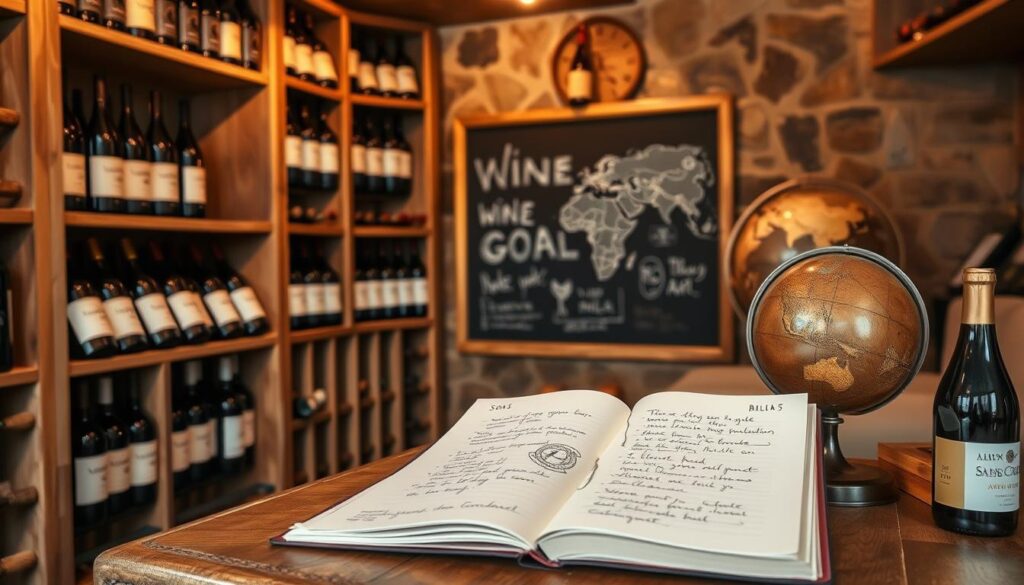
Choosing the Right Wine Collection Services
Establishing your wine collection requires careful consideration of the services that can facilitate its growth and preservation. The right wine collection services enhance not only your investment but also your enjoyment. Professional wine storage ensures that your valuable bottles receive optimal climate control and security, safeguarding them from temperature fluctuations and potential damage over time.
Benefits of Professional Wine Storage
Utilizing professional wine storage offers several advantages:
- Climate control that maintains ideal temperature and humidity levels.
- Security features to protect your collection from theft or damage.
- Accessibility, making it easier to manage your inventory.
- Preservation of wine quality, ensuring your bottles age gracefully.

Finding Reliable Wine Merchants
Partnering with reliable wine merchants is pivotal in accessing quality wines to add to your collection. Knowledgeable merchants provide insights into the best options based on your preferences and budget. Seek those with a proven track record, demonstrating their commitment to quality and authenticity. Avoid impulsive purchases based solely on presentation, as this may lead to regrettable mistakes, particularly with counterfeit wines.
Additionally, consider engaging with merchants who offer wine collection services, as their expertise often extends to supporting emerging collectors. Their knowledge of classic wine regions, such as France and Italy, helps guide you in selecting age-worthy, collectible wines that will enhance your cellar.
Building Your Wine Collections: Best Practices
As you embark on creating a delightful wine collection, incorporating best practices is essential to ensure you have an engaging assortment. Experimenting with different regions and varietals can significantly enhance your wine experience. By trying wines from diverse backgrounds, such as Italian and German regions, you can elevate your palate and discover new favorites that might become staples in your collection.
Experimenting with Different Regions and Varietals
Diversity in your wine collections is a critical aspect of building something unique and enjoyable. Exploring various regions allows you to appreciate the nuances of terroir and winemaking traditions. As you expand your tasting repertoire, keep in mind some of the best practices for selecting wines:
- Sample wines from various countries like Italy, France, and South Africa.
- Consider different varietals such as Cabernet Sauvignon, Chardonnay, and Riesling.
- Attend tastings or wine festivals to connect with local producers.
- Join wine clubs that offer shipments of diverse selections.
Striking a Balance between Ready-to-Drink and Age-Worthy Wines
A well-rounded collection should balance ready-to-drink wines and age-worthy selections. While many wines are crafted to be enjoyed soon after release, having age-worthy wines offers the promise of future enjoyment. Aim for a thoughtful selection that caters to both tastes. Here are some insightful tips:
- Identify wines that are known for aging potential, such as Bordeaux or Barolo.
- Store wines at optimal conditions, maintaining a temperature of 55°F and humidity levels around 70%.
- Monitor your collection using a cellar tracking system to ensure you enjoy each bottle at the ideal time.
- Establish connections with trusted retailers who can provide insights into which wines will benefit from aging.
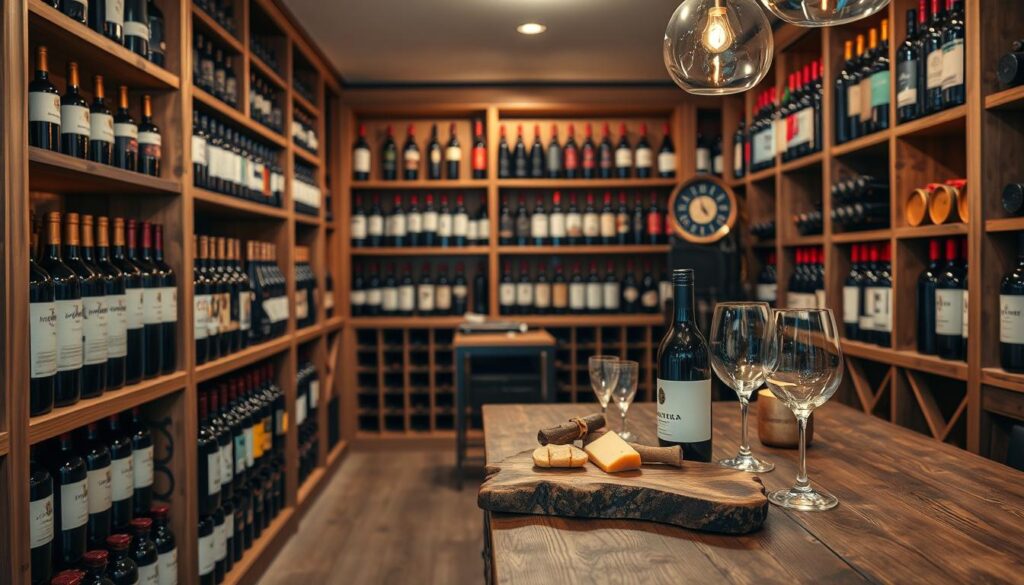
Building a solid foundation in your wine collections not only enhances your enjoyment; it also enriches your understanding of the wine world. By committing to experimenting with new varietals and strategically selecting both ready-to-drink and age-worthy wines, you set the stage for a vibrant and evolving collection.
Investing in Vintage Wine Collections
Investing in vintage wine collections can offer both enjoyment and financial gain. Understanding vintage ratings is crucial, as these ratings provide insights into the quality of wine from specific years. Ratings can guide you in making informed decisions about which wines to purchase, enhancing your overall collection.
Understanding Vintage Ratings and Their Importance
Vintage ratings are an essential component of investing in vintage wine collections. These ratings reflect the quality levels of wines produced in various years, aiding you in identifying outstanding bottles. Nonetheless, while vintage ratings provide a general overview, relying solely on these scores can be misleading. It’s important to consider other factors such as the producer’s reputation, the wine region, and market trends to ensure a worthwhile investment.
How to Buy Bottles Without Tasting
When buying wine without tasting, consider focusing on established producers known for delivering consistent quality. Trusted auction houses often house a variety of vintage wine collections, presenting several options that meet your investment criteria. Recommendations from knowledgeable wine experts can guide you toward desirable selections. Investing in wine cases instead of individual bottles enhances your potential for profit by diversifying your holdings.
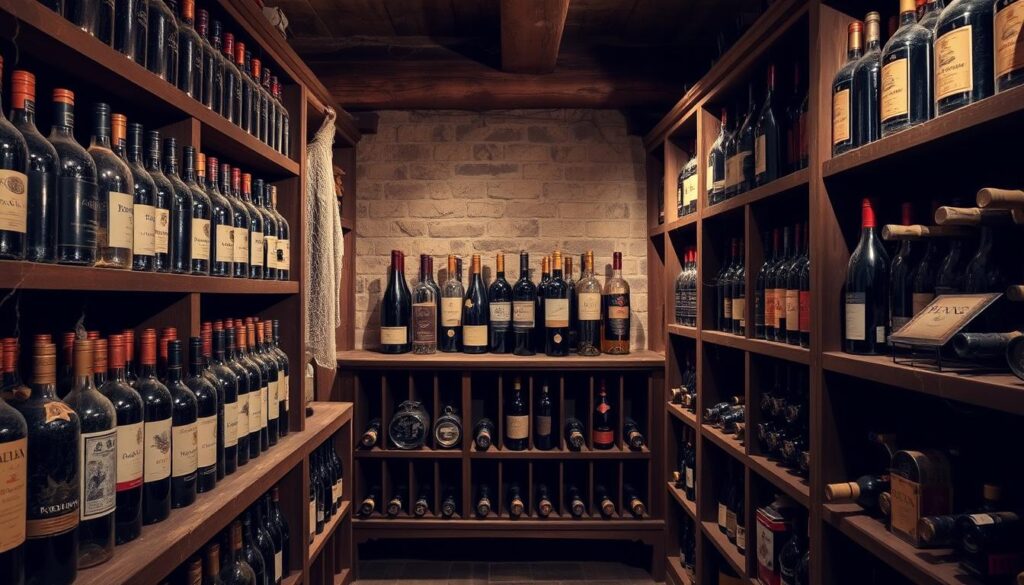
Participating in “in bond” storage at specialist government warehouses provides a duty-free option for your investment wine, helping to preserve its value over time. It is advisable to target wines that will mature in 10 to 20 years for the best financial returns. Notable recent vintages to consider include:
| Region | Top Recent Vintages |
|---|---|
| Bordeaux | 2020, 2019, 2018, 2016, 2015 |
| Burgundy | 2019, 2016, 2015 |
| Champagne | 2012, 2008 |
| California | 2018, 2016, 2015 |
| Tuscany | 2017, 2016, 2015 |
Maintaining quality is paramount when investing in vintage wine collections. Always prioritize purchasing from reputable merchants to enhance your investment’s viability. Remember, it might take a few years before your investment pays off, so patience is key in the world of fine wine.
Luxury Wine Collections: What to Consider
When building a luxury wine collection, several factors demand attention to ensure both satisfaction and investment growth. Selecting exclusive wines from renowned producers forms the foundation of this endeavor. Such wines not only offer exquisite flavors but also present the potential for value appreciation over time.
Choosing Exclusive Wines from Renowned Producers
Exclusive wines are typically crafted with an emphasis on quality and tradition, originating from famous regions. Renowned producers often have a history of excellence, making their offerings more desirable. When you focus on these wines, some considerations include:
- Reputation of the vineyard
- Reviews and tasting notes
- Rarity of the vintage
- Potential for appreciation in the secondary market
The Appeal of High-End Wine Auctions
High-end wine auctions create unique opportunities to discover rare bottles, such as acclaimed Burgundies and prestigious Bordeauxs. These auctions attract collectors and investors, allowing you to acquire sought-after wines that may not be available through traditional retail channels. Some crucial aspects to keep in mind include:
- Research auction platforms and their reputations
- Understanding auction fees and bidding strategies
- Verifying the authenticity of wines
- Awareness of market trends to make informed bidding choices
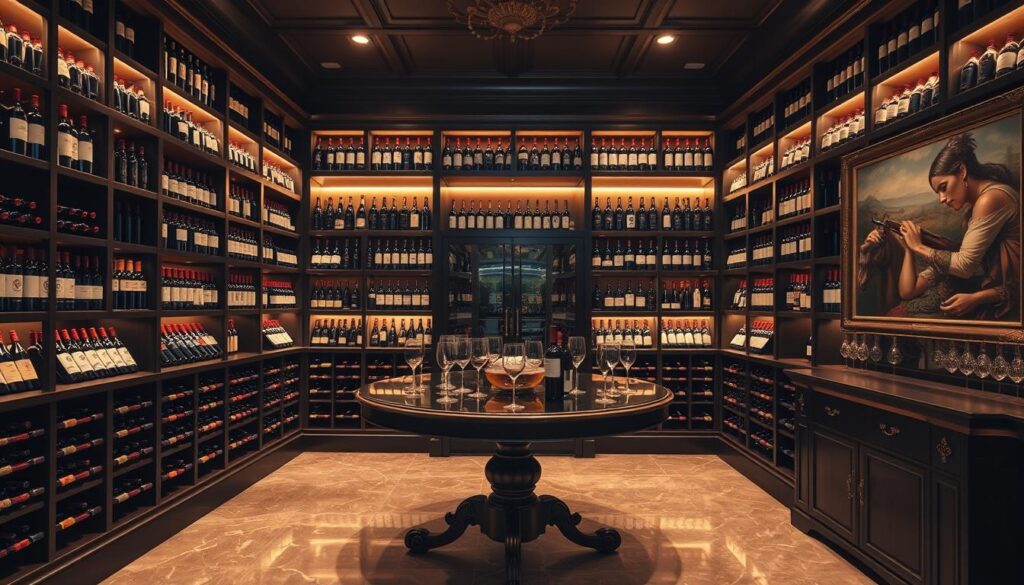
Investing in luxury wine collections not only fulfills a passion but also offers the potential for monetary returns if chosen wisely. Engaging in exclusive wines and participating in wine auctions elevates the experience to new heights, fostering both enjoyment and financial prospects.
Wine Collection Management Techniques
Managing your wine collection efficiently is essential for enjoying your wines to the fullest. Effective wine collection management involves consistent inventory tracking and adopting wine storage best practices. With the right tools and techniques, you’ll ensure your collection remains organized and in top condition.
Keeping Track of Your Collection Inventory
Utilizing wine cellar management software simplifies tracking your purchases and consumption. Some popular options include Bento for iPad, Cadent wine cellar, and Your Wines HD. These apps facilitate easy browsing and organization of your wine collection. For more extensive needs, consider the eSommelier Private Wine Cellar Management System. This comprehensive solution features a touch-screen terminal, bar code scanner, and printer, allowing you to keep an eye on up to 200 bottles seamlessly. Regular inventory tracking with these apps ensures you know exactly what you have and what needs to be consumed.
Best Practices for Storing Your Wines
Storing your wines properly is crucial for preserving their quality. Aim to maintain an ideal cellar temperature of around 55°F (13°C) while keeping humidity levels between 50-80%. These conditions help protect cork integrity and prevent label damage. Horizontal storage is recommended for long-term aging, allowing the cork to stay in contact with the wine. Minimize light exposure using tinted glass doors or UV-filtering film to avoid degradation of the wine quality. If you’re looking to enjoy your wines soon, consider investing in a wine refrigerator to ensure they are kept at the perfect serving temperature. Additionally, organizing your wines in a way that makes them easily accessible can be a time-saver when you’re planning a dinner party or looking for the perfect bottle to pair with a tasty appetizer recipe. Proper storage not only preserves the quality of your wines but also enhances the overall enjoyment of drinking them.
Consider using vacuum pump systems to prolong the lifespan of opened bottles by eliminating excess oxygen. Inert gas blanketing with argon or nitrogen can further help prevent oxidation without altering the wine’s taste or aroma. Regular rotation practices like FIFO (First In, First Out) or LIFO (Last In, First Out) allow you to maintain inventory freshness and reduce spoilage.

Understanding different factors like grape variety, tannin levels, acidity, and sugar content will enhance your assessment of a wine’s aging potential while contributing to effective wine collection management.
Enjoying Your Wine Collection
Wine collecting thrives on enjoyment and sharing. Engaging in wine tastings serves as a delightful way to showcase your collection to friends while enriching your knowledge and enhancing your tasting abilities. Each gathering transforms your living room into a mini wine festival, where different flavors and experiences come alive. You can explore the nuances of each bottle, offering a memorable evening filled with laughter and learning.
Hosting Wine Tastings and Sharing with Friends
Organizing wine tastings can bring a social element to enjoying wine collections. Here are some tips to enhance your tasting evenings:
- Choose a theme: Narrow down your selection based on grape variety, region, or even a favorite vineyard.
- Provide resources: Offer tasting notes or a brief background on each wine to facilitate engaging discussions.
- Encourage participation: Invite guests to share their impressions and preferences, fostering conversation.
- Pair with food: Complement your wines with appetizers that highlight their flavors, making the experience even richer.
Developing a Tasting Journal to Record Experiences
A tasting journal becomes an invaluable tool in your wine journey. Documenting your experiences not only sharpens your palate but aids in future purchasing decisions. Here’s why maintaining a tasting journal is beneficial:
- Track preferences: Record your favorite wines and producers to refine your choices in the future.
- Evaluate growth: As your palate evolves, refer back to past notes to see how your tastes have changed.
- Enhance knowledge: Writing detailed notes encourages deeper understanding of flavors, textures, and scents.
- Create lasting memories: Your journal will become a cherished keepsake, encapsulating shared experiences with friends.
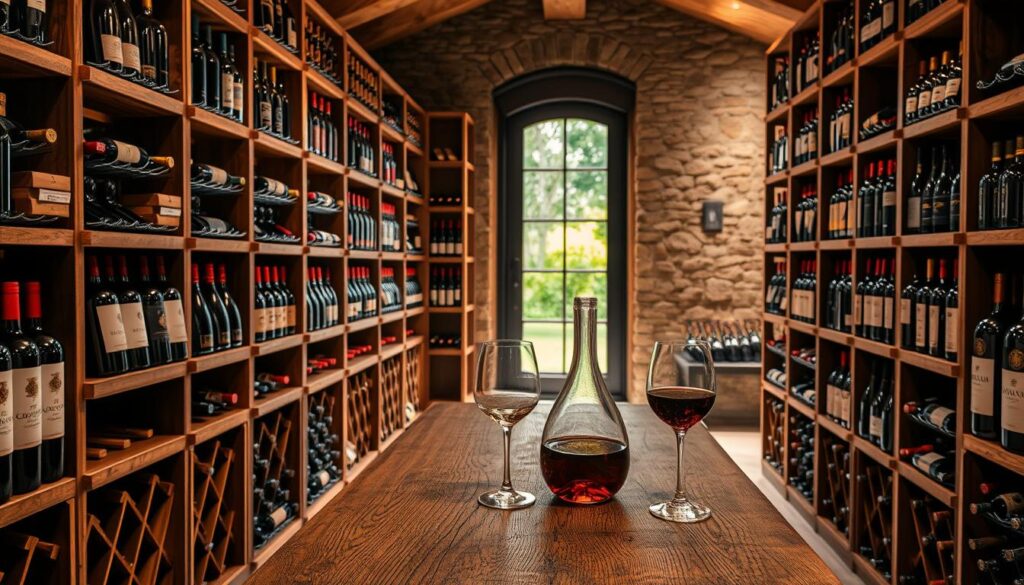
With these practices, you can ensure that your passion for wine extends beyond collection, allowing it to be an enjoyable shared experience enriched by meaningful conversations and discoveries. Enjoy every sip and every moment shared with your wine-loving friends.
Conclusion
Building your wine collection is an enriching journey that allows you to explore diverse flavors and regions while enjoying the art of wine appreciation. By implementing the expert tips shared throughout this article, you’re equipped to create a collection that reflects your personal tastes and preferences. From understanding proper storage temperatures of 55-65°F and maintaining a humidity level around 70%, to ensuring you track essential details like the wine’s name, vintage, and region, every element plays a crucial role in preserving the quality of your cherished bottles.
Establishing clear goals and a budget for your collection not only aids in financial planning but also enhances the joy of discovering wines that resonate with your palate. The process can be strategic, turning a simple hobby into a long-term endeavor that yields both satisfaction and knowledge. Engaging in wine tastings, organizing your collection thoughtfully, and exploring various sources for purchasing wines will bolster your experience and broaden your understanding of the wine world.
Ultimately, the journey of curating your ideal wine collections will be filled with enjoyable moments, from hosting tastings with friends to experimenting with food pairings. Embrace the adventure of building your wine collection and savor each bottle, as every sip is an opportunity for discovery.
